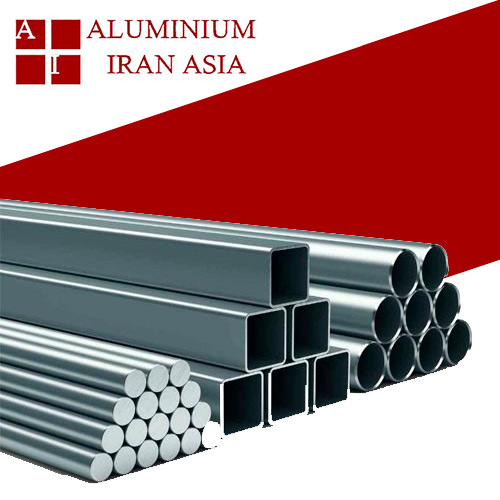Aluminum alloys are widely used in all types of structures, aviation and marine industries, power transmission lines, vehicles, etc. are being used.
Aluminum is one of the most widely used metals in various industries. This metal has different alloys that we decide to explain to you.
Aluminum alloy is actually placed in different categories, each of which can be used for an industry depending on their characteristics.
What is the grouping of aluminum alloys?
Aluminum alloys are divided into two groups:
Worked alloys and casting alloys, which are introduced in this section.
Workable or rolling alloys
These products are produced from cast ingots, whose structure changes drastically due to various working and thermal treatments. Each category of worked aluminum alloys has a different behavior compared to other alloys, and their composition and structure determine the working characteristics and the properties resulting from these characteristics.
The usable alloys of this metal are actually the alloys that are mechanically formed into the desired shape, and some of these alloys can be strengthened by special heat treatment, while some of them do not have thermal capabilities.
Based on its alloy element, it is divided into eight groups and each of the alloys of each group is named by A.A, or the Aluminum Society, with a four-digit number.
The classification of these alloys is as follows:
– Alloys with magnesium as the main alloying element
– In this category, magnesium and silicon are the main elements.
– Alloys in which zinc is the main alloying element, but other elements such as Cr, Mg, Cu and Zr may be present in them.
– This category of alloys includes tin and some lithium.
– Pure controlled non-alloy compounds
– Alloys whose main element is copper and other elements in which Mg is significant.
Manganese is the main alloying element of this category.
Silicon is the main alloying element of this category
Casting alloys
There are alloys that are made into the desired shape through casting. Some of these alloys can be heat treated and some of them cannot be heated.
Each casting alloy is designated by A.A with a four-digit number without the fourth and third digits from the left of a dot.
The classification of these alloys is as follows:
- They are unusable.
- This group includes the main alloy element zinc, along with other alloy elements such as copper and magnesium that may be present in them.
- Tin is the main alloy element of this group.
- They are unusable.
- Controlled non-alloy compounds are used, especially in the construction of rotors.
- Alloys in which copper is the main alloying element, but may have other alloying elements.
- Alloys with the main element silicon, which also have other alloying elements such as copper and magnesium.
- Silicon is the main alloying element of this category.
- Magnesium is the main alloy element of this category.
Introduction of aluminum alloy types
Aluminum has different alloys and each of the mentioned elements has different properties and characteristics. We have brought you the most important elements combined with this metal and its alloys.
- Strontium
It is used for modification and improvement of aluminum-silicon eutectic alloys.
- Copper alloy
Copper alloy is used in light structures and aircraft industry. It also has less corrosion resistance than aluminum.
A thin coating of commercially pure aluminum is rolled onto the surface of the copper alloy to resist it. For this reason, sometimes it is introduced with C code.
Copper alloy is also known by the brand name of aluminum. This alloy is very hard with 5.7% copper.
Sometimes silicon and magnesium alloy elements are also used.
- Magnesium alloy
As the amount of magnesium alloy increases and reaches more than 10%, its corrosion resistance decreases drastically.
The main use of magnesium alloy is in architectural and decorative works. Because it has high corrosion resistance and its light weight is remarkable. Also, indirectly, the ability to polish well and maintain the polish is very high.
Magnesium is also known by the brand name Allomag. The amount of magnesium is less than 10%. The main characteristic of magnesium alloy is corrosion resistance.
. 4 silicon alloy
Silicon alloy is also known by the brand name Alpax. The increase of silicon can also increase its castability without disturbing its malleability. Also, at the same time, it will increase its mechanical resistance.
Also, at the same time, it will increase its mechanical resistance.
Normally, silicon alloy is used in the manufacture and supply of oil tanks for internal combustion engines, parts of washing machines, radiators and electrical devices.
5. Tin
It can effectively improve the anti-friction property. Therefore, it is used in bearing applications. Cast alloys may contain up to 25% tin.
Increasing the amount of tin in alloys can improve machined properties and affect precipitation hardening in some of them.
6. Lead .
The presence of lead in amounts of more than 0.1% improves machining in alloys.
- iron
It can improve hot crack resistance and significantly reduce mold sticking in injection molding. An increase in the percentage of iron can reduce the formability of aluminum.
It is also possible that this element reacts with other elements added to the melt and produces complex metal compounds or sludge.
- Manganese
It is used in small amounts to control the destructive effect in the form of brittle and brittle phases.
Its amount is about half percent of iron.
It is used as an alloy element in usable alloy compounds.
- Chrome
Chromium compounds have very low solubility in solid state and prevent grain growth.
In some alloys, it improves the corrosion resistance, and in higher amounts, it increases the sensitivity to rapid cooling.
Adding chromium can cause intermetallic compounds.
- phosphorus
It is an element that causes nucleation and purification or dissolution of the silicon phase in aluminum-silicon hyperiotectic alloys.
- nickel
Together with copper, it increases the resistance at high temperature in aluminum and reduces the coefficient of thermal expansion.
- Titanium
Titanium is used along with a small amount in making alloys.
Titanium element is used for microstructure in cast aluminum alloys.
Properties of aluminum alloy
Alloys have different properties and characteristics. We would like to explain the properties of each to you.
Recyclability:
It is considered as one of the structural materials that can be recycled. You can use them as high quality products after recycling.
Ease of connection:
Can be joined by a wide variety of common commercial methods such as welding, soldering, screwing, riveting and nailing.
Usability:
You can use aluminum alloys in many metalworking methods that require workability.
Strength and weight:
The strength of base alloys is not as strong as steel, but the ratio of strength to weight of these alloys is high.
For this reason, there are many commercial alloys of this metal. You can increase the strength of these alloys by hot work or hard precipitation.
Electrical conductivity:
They have very high electrical conductivity, but with these details, they rank second among commercial conductive metals after copper.
Thermal conductivity:
Aluminum and its alloys have high thermal conductivity, but they reach the melting point at a lower temperature than steel. In case of proximity to fire, their temperature increases more slowly.
Corrosion resistance:
Many alloys of this metal show high resistance to atmospheric and chemical corrosion due to the formation of a natural layer of sticky oxide.
Elements combining with aluminum alloy
Various elements are combined with aluminum metal and an alloy is obtained. You should know that not all elements can be combined with this metal and they do not give us an alloy after they are mixed with each other.
Such as zinc, magnesium, copper and silicon. These elements show high solubility in this metal.
Casting alloy names
1xx.x almost pure aluminum
2xx.x aluminum and copper alloy
3xx.x Aluminum with copper, silicon and a little magnesium
4xx.x silicified aluminum
5xx.x aluminum and magnesium alloy
6xx.x alloys with a combination of magnesium, silicon and aluminum
7xx.x alloys with a combination of zinc, aluminum and magnesium
8xx.x Aluminum alloy with less conventional elements such as tin and lithium
Conclusion
Alloys are metal alloys whose structure includes up to 96% of the aluminum element, which in addition to this metal has other elements.
These elements are added to the base element i.e. aluminum in order to improve specific properties.
Usually, these alloys have other alloy elements in addition to aluminum, which may be combined with them in some other sub-elements.
A small amount of these sub-alloys can have a significant effect on the properties of aluminum alloy.




